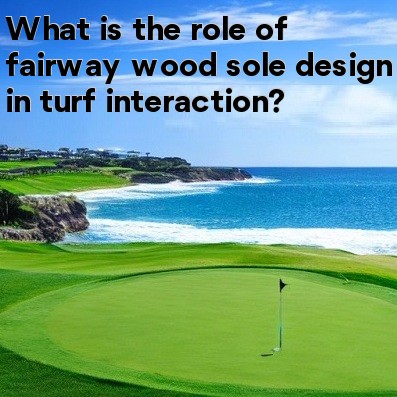
Fairway Wood Sole Design and its Role in Turf Interaction
When it comes to fairway woods, one crucial aspect that greatly affects a golfer's performance is the sole design. The sole design plays a vital role in how the club interacts with the turf during a swing. Let's delve deeper into the significance of fairway wood sole design in turf interaction.
Low-Profile Sole Design
A fairway wood with a low-profile sole design often features a shallow curve from the leading edge to the trailing edge. This design allows the club to glide smoothly through the grass, reducing the chance of the club digging into the turf. Golfers who struggle with hitting shots fat or encountering turf interaction issues often find a low-profile sole helpful. The low-profile sole helps the club maintain consistent contact with the ground, resulting in improved ball striking.
Wide Sole Design
Wide sole fairway woods are designed with a broader base, which helps distribute the club's weight more evenly. This effectively lowers the center of gravity (CG) and promotes better turf interaction. The wider sole prevents the club from digging into the ground, particularly on shots hit in softer turf conditions. Golfers who find themselves frequently playing on courses with plush fairways or encountering longer grass may benefit from employing fairway woods with a wide sole design.
Rail or Bounce Sole Design
A rail or bounce sole design features additional rails or channels along with the club's sole. These rails or channels significantly reduce the surface area that contacts the turf during the swing, improving turf interaction. The rail design allows the club to glide smoothly through the grass, preventing digging and promoting more consistent ball striking. Golfers who tend to have more steep swings or play on courses with tighter lies can greatly benefit from using fairway woods with a rail or bounce sole design.
Adjustable Sole Design
Some fairway woods on the market offer adjustable sole designs, allowing golfers to fine-tune the turf interaction according to their preferences or course conditions. These adjustable features often include sole weight adjustments or adjustable hosel settings. By tweaking the sole design, golfers can optimize their fairway woods for different turf types and playing conditions, gaining an advantage in terms of turf interaction.
Selecting the Right Sole Design
Choosing the right sole design for your fairway woods depends on various factors, including your swing technique, course conditions, and personal preference. Golfers with shallow swings or those who tend to encounter less forgiving turf conditions may find a low-profile or wide sole design more suitable. On the other hand, golfers with steeper swings or playing on tight fairways may benefit from a rail or bounce sole design.
Ultimately, finding the fairway wood sole design that complements your game can help you achieve better turf interaction, leading to improved shots and lower scores on the course. Consider experimenting with different sole designs to discover what works best for you and take your golf game to the next level.





